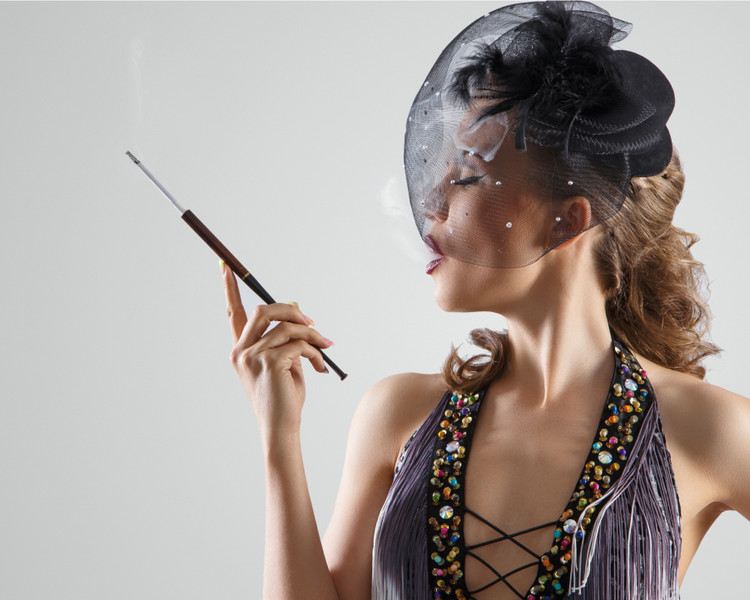Understanding Cabaret and Burlesque
You’ve seen it in the news, you’ve watched it in the movies, and viewed them in arts listings. What else are we talking about? Well, they’re none other than cabaret and burlesque. Both forms of entertainment are quite popular, but they’re also the kind that gets taken for granted easily. What do these two words mean, exactly? Do they share the same meaning? Or are they completely different from one another?
If you’re having a bit of difficulty telling them apart, don’t fret. Almost everyone does since these words get thrown around these days with very little explanation, even by performers and show producers themselves. Like with most buzzwords, journalists and PR teams love to print them as much as possible, leaving the audience wondering precisely what cabaret and burlesque are.
People mistakenly use the words interchangeably and truth be told, we can’t fault them. While that may save time when picking a show to see on the weekend, it fails to give justice to the live acts that fuel the bustling scene.
It’s all about cabaret and burlesque today. Here’s your crib sheet the next time someone pops the question, “what show you want to watch today?”
Cabaret: Musical comedy with audience interaction
Plenty of cabaret acts and shows mimic historical periods linked to decadence and excess, most notably Fin-de-Siècle France, the American Jazz Age and Weimar Germany which is mainly due to the homonymous 1972 Liza Minnelli film. But that’s incidental at best. A cabaret act is basically one or more performers singing a humorous song and interacting with the audience directly, more often than not bringing patrons on stage to poke fun and laughter. Ribald lyrics, innuendo and politically incorrect impropriety are the norms. Some will laugh with you and some will laugh at you. If Holly Penfield is centre stage, there might be a riding crop involved.
The musical accompaniment may be live or not. Mainly as a consequence of the low production values and small venues that shaped the genre throughout its history, cabaret acts today consist of a singer with a backing track. There’s plenty of live music going on as well, but it’s not a full orchestra. Keyboards, ukuleles, and accordions are the most famous cabaret instruments, as is the kazoo, a puzzling wind instrument that brings a “buzzing” timbral quality to a performer’s voice.
Cabaret is defined by the intimate ambience in which it happens. Performers interact with the public at close quarters, sinuously walking amidst the audience, looking them in the eye and teasing them, verbally or otherwise. For first-timers out there, you should expect a bit of touching involved (if you’re lucky that is).
Burlesque: Dancing with a partial striptease
Much has been made of the Italian origins of the word Burlesque which is a musical-literary term for parody. But burlesque today mainly refers to dance routines where performers gradually seductively undress eye-catching costumes whilst recorded backing tracks are played.
The G-strings, pasties, and nipple tassels that female dancers use to cover their modesties were first seen in France and America in the 1920s as a loophole to circumvent strict public nudity bans. Nowadays, they’re a major part of the genre’s aesthetic, serving many theatrical purposes, including special effects like smoke fire, and other fancy lights.
The mere display of flesh rarely causes shock or arousal in an era when live full-frontal nudity is viewed on art galleries and theatrical stages, to which burlesque has evolved accordingly. Most acts have humorous intent, including everything from tributes or parodies about celebrities and public figures to bold statements regarding beauty standards, gender roles, politics, and a whole host of other topics.
Half pantomime and half performance art, burlesque defies classification with its diversity. The act’s international jargon distinguishes between two broad styles: cheesecake burlesque explores the old stereotypes of glamour, sexuality, and femininity while neo-burlesque exhibits freestyle choreographies and striking visual gags that elicit outrage or shock. Boylesque, on the other hand, is a third genre that’s taken a form of its own. It features male performers that employ drag and cheesecake parodies as well as tributes to male sensuality, both straight and gay
Summing it up
The same stages that welcome cabaret and burlesque will easily receive ventriloquists, mind readers, stand-up comedians, and other distinct genres. Stage magic, though enjoying a separate scene on its own, is often bundled with circus acts to maximise exposure, and many magicians make the most out of intimate cabaret venues by performing magic tricks up-close from table to table.
As with any other art form, all rules and conventions can be tested by borderline and hybrid acts. Audacity Chutzpah merges the language of burlesque and clown into a recognisable brand of physical gags, while Sabrina Sweepstakes blurs the line between striptease and performance art with sophisticated pieces that are melancholic, wistful, irreverent or horrifying. Few artists defy description like The Boy With Tape on His Face, who mixes both the comedy and cabaret circuits with a unique fusion of pantomime, magic and intense audience interaction.
 USD
USD
 EUR
EUR
 AUD
AUD
 GBP
GBP
 SGD
SGD

